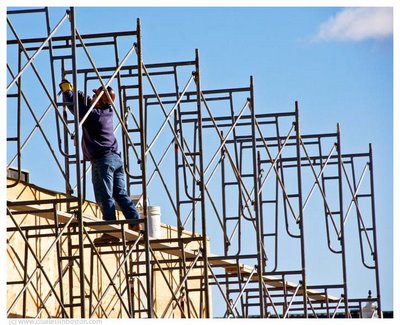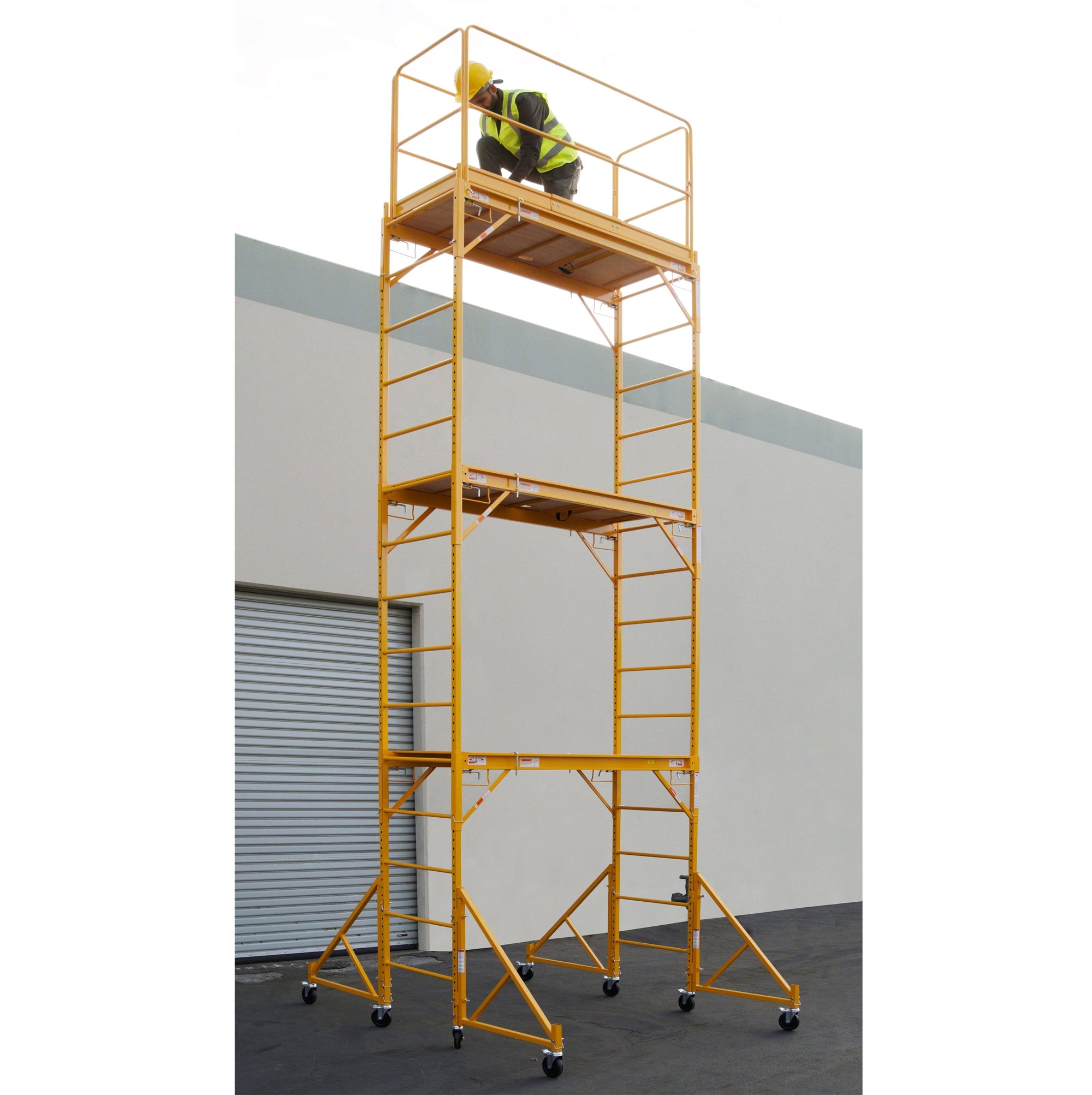Discovering the Advantages of Scaffolding for Contractors and Building And Construction Employees
The application of scaffolding in building projects works as an essential aspect for improving operational performance and security. By providing secure accessibility to elevated workplace, scaffolding not only alleviates the danger of drops however also streamlines process for numerous trades entailed in a job. Moreover, its versatile nature permits application throughout a large range of building and construction situations, potentially causing significant price savings. The full range of scaffolding's benefits extends beyond plain functionality and security-- there are much deeper implications that require more expedition.

Boosted Employee Security
Improved worker safety is a paramount concern in the construction sector, especially when it pertains to the use of scaffolding. Correctly designed and installed scaffolding systems give essential assistance for workers running at elevations, considerably decreasing the risk of drops, which are among the leading causes of casualties in building.
Scaffolding enhances safety and security via its structural honesty and design functions that enable steady job systems. Premium scaffolding materials, such as steel or light weight aluminum, offer resilience and toughness, making sure that they can endure the weight and movement of employees and materials. Moreover, safety actions such as guardrails, toe boards, and gain access to ladders are important parts that avoid injuries and mishaps.
Normal examinations and maintenance of scaffolding are vital to copyright safety standards. Investing in proper scaffolding remedies is not just a governing need; it is a basic element of promoting a protected working environment in the construction field.
Improved Access
Accessibility in the building sector is important for promoting efficiency and efficiency on task websites. Scaffolding supplies a versatile solution that considerably enhances accessibility for specialists and construction employees. By providing secure systems at different heights, scaffolding makes it possible for workers to reach raised areas securely and successfully, decreasing the need for difficult ladders or uncomfortable positions that can prevent progress.
The layout of scaffolding systems enables for easy motion of personnel, devices, and products, simplifying process and decreasing delays. With correct scaffolding in location, employees can collaborate better, as numerous staff member can run at the same time in a constrained space without jeopardizing safety and security or ease of access. This flexibility is particularly useful in intricate construction jobs that need constant changes in elevation or placement.
Furthermore, scaffolding can be personalized to fit details project needs, making sure that all locations come regardless of the structure's style. By boosting accessibility, scaffolding not only improves the job setting yet also adds to a more well organized website, therefore promoting a culture of effectiveness and security. In summary, enhanced access via scaffolding is a crucial aspect in maximizing the efficiency of building and construction groups.
Raised Performance
The implementation of scaffolding not just improves accessibility but also plays a significant role in increasing performance on building and construction websites. By giving a secure and safe and secure platform, scaffolding enables workers to perform jobs at elevation with higher simplicity and security. This reduces the time invested relocating materials and equipment, as whatever needed is within arm's reach. Employees can focus on their specific jobs without regular interruptions.
Moreover, i loved this scaffolding makes it possible for multiple professions to work all at once, improving collaboration and quickening project timelines. For circumstances, while one crew is mounting electrical systems, one more can work on pipes or finishing tasks on the very same level, decreasing downtime. The strategic design of scaffolding also assists in quicker movement across the website, eliminating the requirement for consistent elevation modifications or too much ladder use.

Cost-Effectiveness
While lots of may originally view scaffolding as an additional expenditure, its application actually adds to considerable cost-effectiveness on construction jobs. By helping with more secure and a lot more efficient workplace, scaffolding lessens the risks of injuries and mishaps, which can lead to expensive delays and enhanced insurance policy premiums.
Additionally, scaffolding boosts productivity by supplying scaffolding technique employees with immediate access to several degrees of a structure. This ease of access not just increases the pace of building yet additionally decreases labor expenses, as employees can finish tasks much more quickly without the demand for cumbersome ladders or lifts.
Additionally, the modular nature of scaffolding enables for adaptability in its usage throughout various projects, resulting in lowered rental prices when compared to much less versatile choices. The capacity to reuse scaffolding for various jobs additionally magnifies its cost-effectiveness, ensuring a greater return on investment.
Convenience in Applications
Regularly identified for its flexibility, scaffolding serves a wide variety of applications in the building and construction sector. Its versatility permits use in various jobs, from residential buildings to massive commercial developments. Scaffolding systems can be personalized to fit different site conditions, fitting special architectural styles and heights.
Along with typical construction, scaffolding is additionally important for repair and maintenance jobs. Whether it entails paint, window installment, or facade repair, scaffolding gives a secure platform that improves employee security and effectiveness. Its modular style permits fast setting up and disassembly, making it suitable for projects with limited timelines.
Furthermore, scaffolding is not limited to vertical structures; it can be effectively utilized in bridge building, commercial facilities, and even short-term occasion areas. The capacity to adapt scaffolding for different atmospheres makes certain that service providers can meet diverse project needs without jeopardizing safety or availability.
This multifunctionality emphasizes the importance of scaffolding in modern building techniques, allowing service providers and construction employees to implement their jobs with better versatility and precision. Eventually, the convenience of scaffolding adds significantly to the general success of building and construction jobs throughout numerous fields.

Conclusion
In summary, the advantages of scaffolding for service providers and building workers are substantial. Boosted employee security reduces autumn threats, while enhanced ease of access guarantees that raised areas can be reached effortlessly. Increased effectiveness is attained through seamless process, and cost-effectiveness is recognized by maximizing source allotment. The convenience in applications permits scaffolding to adjust to different project requirements. Collectively, these advantages add to a safer, a lot more productive, and economically sensible building atmosphere.
The implementation of scaffolding in building tasks serves as a crucial component for boosting functional effectiveness and safety. Scaffolding supplies a versatile remedy that considerably improves availability for specialists and building and construction employees. In summary, improved accessibility with scaffolding is a critical factor in enhancing the performance of building and construction teams.
The application of scaffolding not just improves availability but additionally plays a considerable duty in increasing efficiency on building and construction sites. Temporary Roof Scaffolding.In summary, the benefits of scaffolding for specialists and building employees are significant